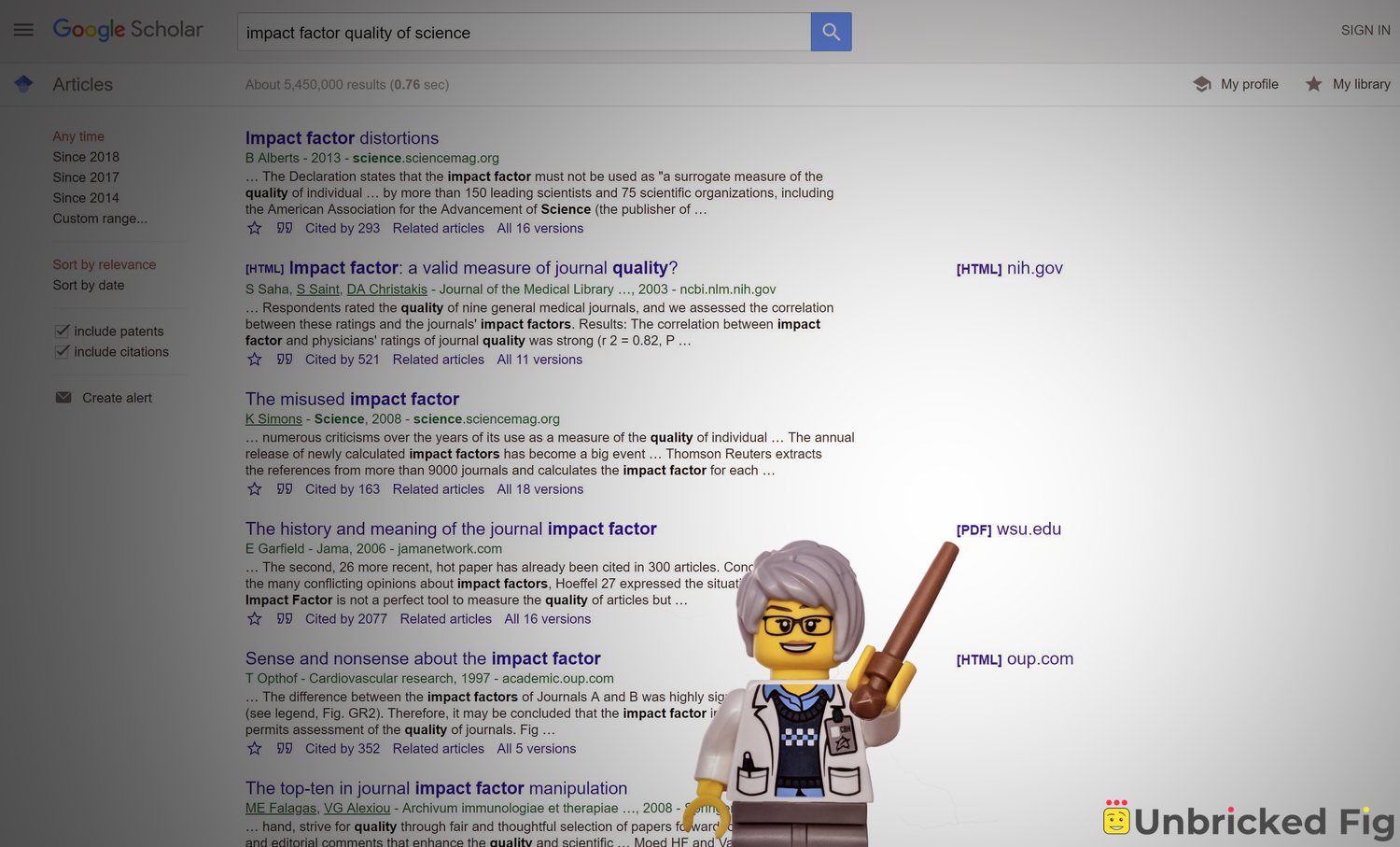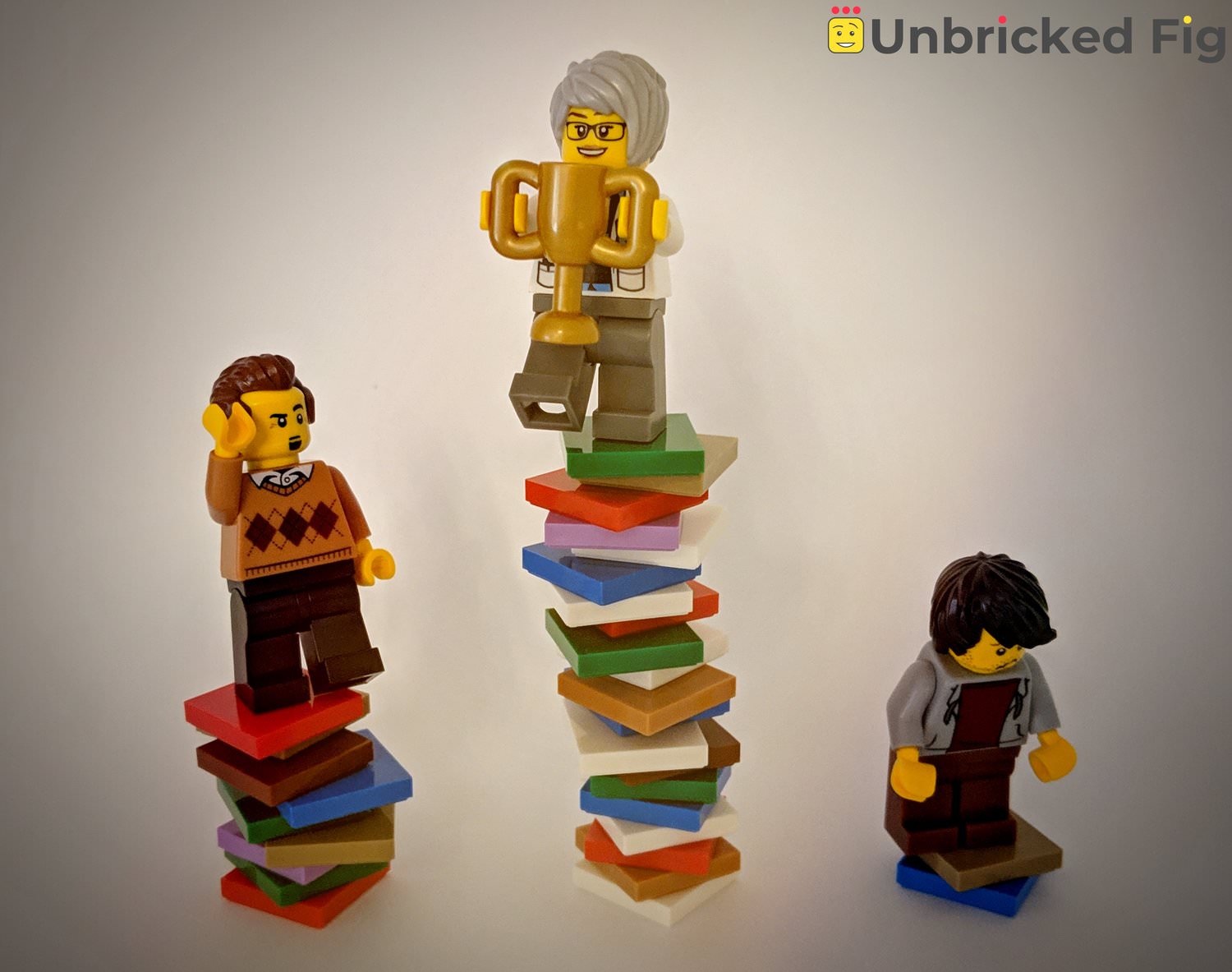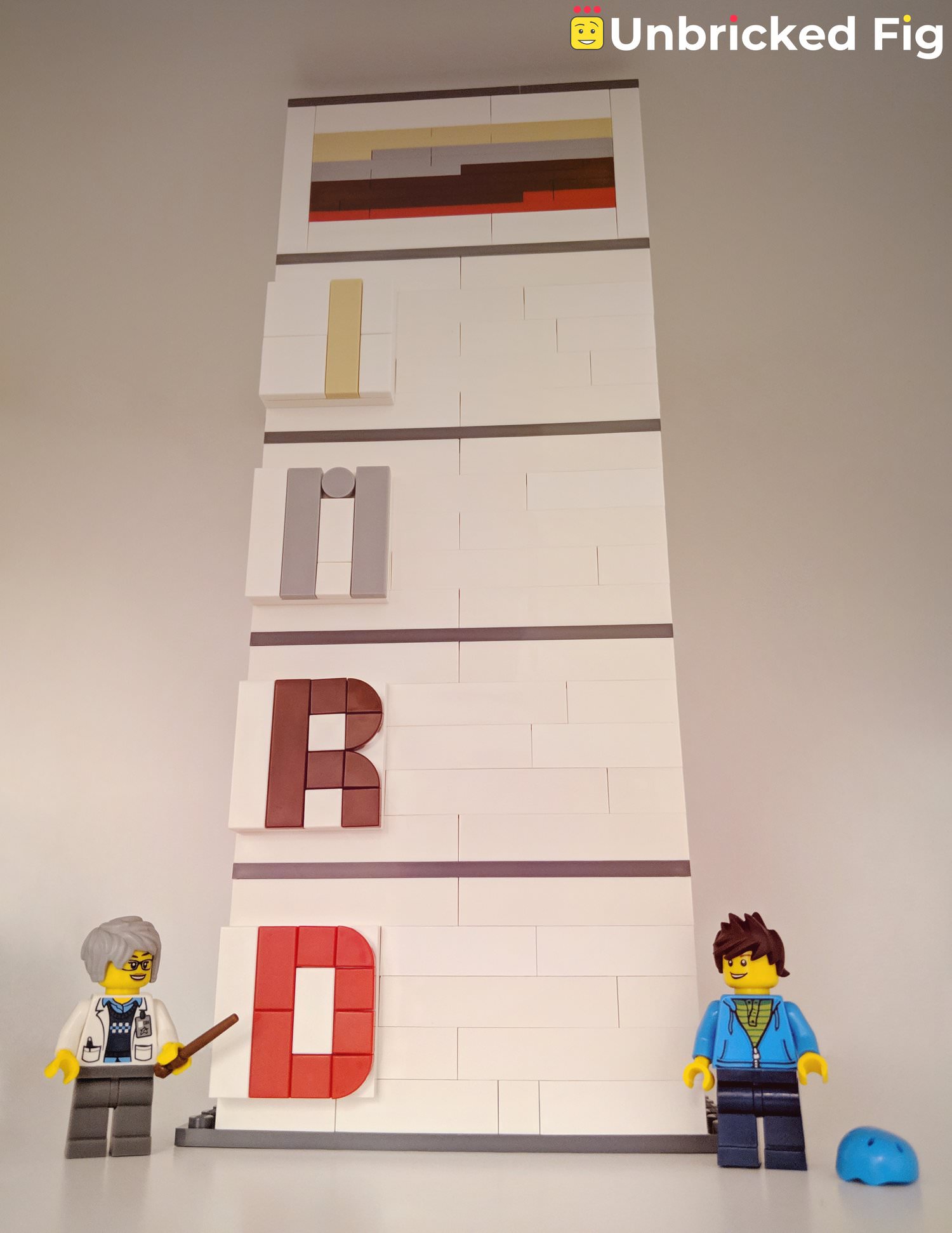How to read research papers (even if you're not a trained scientist)
“Scientists prove chocolate makes you lose weight!” – would your trust and share this news? Would you know how to check the reported science on your own before starting a diet based on chocolate?
I didn’t choose the chocolate example at random. It was actual news that quickly spread around the world and turned out to be an elaborate lesson of how “science” can be manipulated to feed the insatiable media demand for exciting news and a cautionary tale against pay to publish “journals.” This is just one example – don’t even get me started on vaccines – of why being able to check the sources of research on your own is becoming a crucial skill in this age of soundbites and growing distrust of experts – even if you’re not a scientist.
So whether you're a journalist looking to confirm the sensationalistic story that just landed in your inbox, or just an average fig looking to confirm the news you're helping to spread on social media, I'd like to share a few tips and tricks about reading research papers that
I've learned in grad school
 Note that the author has not actually finished grad school, but has successfully completed the Scientific Skills I course.
.
Note that the author has not actually finished grad school, but has successfully completed the Scientific Skills I course.
.

What you will learn: reading isn’t just about finding the paper
In my head, this started as a simple post about how to untangle the structure of scientific papers. But posting a scientific-looking paper online is super easy these days, and I wanted to avoid somebody reading this post and then proudly pointing at “proof” of some shady claims because “science.” Science is a word we like to throw around to back up our assumptions – there’s even a book about how politicians love to say “I’m not a scientist but …” and then proceed to misrepresent or entirely make up science to support their political views.
That’s why I’m afraid just knowing how to read a paper isn’t enough anymore. However, fear not, I’ve got you covered! In this post you will learn:
-
Where can you find scientific papers? (Meet Google Scholar, a smarter Google that lives inside your existing search engine.)
-
How can you tell if a paper is any good? (An introduction to how researchers and journals measure their scientific impact.)
-
How to find the best journals in a field? (Details on journal rankings, a warning about predatory journals, and a note on conference papers.)
-
Why is peer review important for scientific papers? (And why you should look for journals that make this process difficult to pass.)
-
How to read scientific papers without feeling stupid? (Spoiler alert: starting at the end is often better.)
If you’re a journalist in a hurry, you can, of course, skip right to the final part of the post. However, I do hope that you’ll eventually take the time to learn how to judge the credibility – or at least get in touch with experts that can help.
Now, without further ado, grab your climbing gear, and let our tour of the ivory tower of academia begin!

Where can you find scientific papers?
If you’re lucky enough to use words that researchers in a particular field use, you might sometimes see a relatively small section on top of your Google results called: “Scholarly articles for <insert_sciencey_words>.” If you click on that link, you’ll discover Google Scholar. It’s like an alternate universe search engine that only serves you smart stuff.
Honestly, just by being aware of Google Scholar, you're now
more educated and better equipped
 If you want to impress people at parties, you can also mention Web of Science or Scopus, but good luck using those without an institutional account. There are also more specialized search tools for specific fields, but I think Google Scholar is more than enough to cover most cases.
to find scientific research than the average internet user.
If you want to impress people at parties, you can also mention Web of Science or Scopus, but good luck using those without an institutional account. There are also more specialized search tools for specific fields, but I think Google Scholar is more than enough to cover most cases.
to find scientific research than the average internet user.
Note that it can be tricky to get Google to show you scholarly articles unless you use the right words. I’ll give you a simple example: if you google “twitter emotion triggers,” you’ll see the section “Scholarly articles for twitter emotion triggers,” but change just one word: “twitter feelings triggers” and no scholarly articles for you! While we might use the two words interchangeably in everyday discussions, they have a different meaning in psychology research.
Wikipedia – I’m guaranteed to get some dirty looks from researchers for mentioning the W word now – is a good starting point to a surprising number of research fields as long as you don’t make it your final destination. I often use Wikipedia to discover basic terms to type into Google Scholar, and some pages even include references from trustworthy journals at the end of the article.
Once you have the right terms and want to focus on finding scientific papers, I recommend you go directly to scholar.google.com, where you can sometimes find direct links to full versions of the paper. Pay attention to the narrower column on the right side of the results page, and look for [PDF] or [HTML] links.

If you don’t see the link to the full paper, you’ll click on the main article link and find yourself on the publisher’s website, which will often ask you to register for an account and pay ridiculous sums of money for a paper you’re not even sure you want to read. Should you pay to support the hard work of the researchers? The short answer is NO. Traditional publishing is a big business in which researchers and reviewers don’t get a dime. The open access movement is trying to open access to publicly funded research, but until that happens, Sci-Hub – the Napster of scientific papers – can help you get around paywalls.
🔍 The business of publishing is so messed up I wrote a bonus post about it and the newer models of open publishing.
How can you tell if a paper is any good?
When you manage to do a Google scholarly search, you’ll notice that scholarly results include a “Cited by <number>” link. That is how researchers measure how important they are. It’s a simple principle: the more people mention your work in their papers, the more badass researcher you are! If you write an influential paper, everyone else in your field will start talking about it. In the world of science, this is the metric that defines your impact. Think of citations as scientific likes, with the raised stakes of your job and promotion depending on how many scientific likes your papers get.
Journals are also ranked by their impact factor, which is one of the fancy-sounding metrics for counting the popularity – number of citations – of the papers they publish as compared to other journals. Also, the higher the ranking a journal has, the better its chances are for attracting high-quality papers.

If you click on the "Cited by <number>" link in Google Scholar, you can narrow your search just to papers that mention a certain paper. Yes, this can lead you into a rabbit hole of citations, but it can be a useful tool when drilling down into a specific subject. For now remember that the higher the citation number, the better it
usually is
 If you want to be really thorough, you might even want to keep an eye on Retraction Watch. When the scientific community discovers severe problems with the methods or reproducibility of papers, the journals basically say: "Our bad, this shouldn't have been published!" and retract a paper. The page "Top 10 most highly cited retracted papers" on Retraction Watch shows that even papers with a ton of scientific likes can get retracted.
If you want to be really thorough, you might even want to keep an eye on Retraction Watch. When the scientific community discovers severe problems with the methods or reproducibility of papers, the journals basically say: "Our bad, this shouldn't have been published!" and retract a paper. The page "Top 10 most highly cited retracted papers" on Retraction Watch shows that even papers with a ton of scientific likes can get retracted.
This doesn't mean scientists cannot be trusted! Scientists are humans too, and science needs an active community competing for citations to be motivated to point fingers at scientists that try to cheat the system in different ways.
.
How to find the best journals in a field?
Google Scholar (and other citation indexing services), allow you to rank scientific journals by the average number of citations their papers get. Check out the Top publications page on Google Scholar (otherwise hidden under Metrics in the menu) to see the crème de la crème of scientific publishing. What’s a good h5-index number for journals in Google Scholar? It depends on the research field – some are more active than others –, so drilling down is recommended if you want to find out which is the best journal for a particular field.
If you’re interested in following the latest research in a field, following the highest ranked journal is a good strategy. Keep in mind that you might see different journal-level metrics used in different places, but they are mostly different approaches to counting the number of citations their papers get.
So why should you even know all this stuff about journals? Isn’t the “journal” in the name enough to know that it has real science inside? Unfortunately not. The pressure for citations has given birth to so-called predatory journals that pretend to be scientific and will publish anything without a serious review in exchange for enough money. This is how the chocolate weight loss study got published, despite serious flaws in its research method. Also, it’s not uncommon for predatory journals to have very deceiving names, and to trick even well-meaning researchers short a few citation points to pay to publish.
Sometimes you’ll stumble upon journals that include “conference proceedings” in the title. For researchers, scientific conferences are an excellent opportunity to share their latest research and have a paper (or even just abstract) published faster. Are conference papers any good? Almost every field has its annual rockstar conference that’s super difficult to get your paper accepted to. Following these top conferences is often as good as following top journals in the field. This being academia, conferences are, of course, ranked too. Just remember that the quality of papers in proceedings of smaller conferences is not at top-journal level. There usually is some peer review, but it’s more hands-off and forgiving – you can think of it as the junior league of scientific publishing.
Why is peer review important for scientific papers?
Peer review is a term you might have heard before but can’t fully appreciate until you get a nasty review from reviewer #2 – that’s not hashtag-two, it’s number two, and they even have a passionate group of frustrated academics dedicated to them. Who is reviewer #2? Nobody knows because, in most journals, the reviewers and usually the author(s) remain anonymous; this is also known as the double-blind review process. If you’re a badass researcher, journals ask you to review submitted papers from others in your field. Reviewers don’t get paid by journals (although some argue that it’s part of their job as scientists to be good peers), but their unpaid job is to provide harsh feedback on the papers that pass the initial editorial check.
Getting a paper immediately accepted without revisions is almost as rare as a unicorn sighting. Reviewers are an endless source of feedback on style, grammar, methods, and whom you decided to like – I mean, cite! – or not. Reviewer #2 is usually the harshest of them all, informing you that your research “has already been done” or calling your work stupid and/or useless in a number of other eloquent ways. However, as hard as it is to for researchers to read reviews on their papers and get constantly rejected – a major revision is actually positive news in this world! –, this painful process helps researchers improve their methods, writing, and science overall. And that is why journals in which you can pay to publish are not as trustworthy as those that make you wait for months and months for suitably harsh peer reviews. Good science requires pain, and you’d better be willing to wait for it!
When you judge journals for their trustworthiness, just remember that peer review, low acceptance rates and long review times are signs of a respectable journal, along with the previously mentioned citation score.

How to read scientific papers without feeling stupid?
Congrats, if you’ve made it so far, you now know how to use Google Scholar to find papers (or find a shortcut on Sci-Hub), look at citation numbers to get a feeling for how influential the paper and journal are, and know that peer review frustrates researchers but makes their papers much more trustworthy. It’s now time to read some papers critically.
In this final part, I’ll be focusing mostly on research papers: scientific papers that share original research findings. Journals also publish other kinds of papers (or articles), such as review papers, which offer a handy review of what’s going on in a particular field – very useful as a starting point because you can get an excellent summary of current theories and top researchers. If you want to find review papers, add the words “literature review” to your Google Scholar search query to narrow down your search – and pay attention to publication date (year).
Key ingredients of research papers
Leaving other types of papers aside, let’s assume you are interested in original research papers because you want to check the outrageous claims made by your local newspaper. Luckily for you, the structure of research papers has been mostly standardized in the previous century. While there are some differences among fields, the basic recipe for a research paper, now adopted widely by journals, is the IMRAD format. It stands for:
-
Introduction: Why is the research important to the field, what are its research goals? You won’t learn about any new findings in this part, but you can see how the research paper fits in within the field. Start here if you’re very new to the field and want to get a grasp on the context and basic terms.
-
Methods: Which research methods were used to test the hypothesis? Basically the cooking recipe for the experiment that allows other cooks (scientists) to replicate the findings, and reviewers to judge whether the right methods were selected.
-
Results: Ah finally, what were the main findings of the research? Usually includes figures and charts. Be critical when reading this part. Just because a paper has been peer-reviewed and published in a journal, it doesn’t mean it’s established science (remember, papers get retracted all the time, even from top-ranked journals and researchers). If the paper presents the results of a survey or lab experiment, check the sample size – how many people were involved in the experiment? The results of an experiment done on just ten students – who probably did it only to please their professor – probably could use some further research.
-
and Discussion: Think of it as the author(s)’ commentary on how the findings fit into the field, the limitations of the presented study, and suggestions for future research. An excellent place to start if you want to learn about what the findings actually mean. But be critical when reading the interpretations; all experiments have limitations and constraints, so be suspicious if the researchers aren’t open about them.
Papers will often have sections with these exact titles, although you might see some stylistic differences among fields.

Where should you start reading?
Here’s a well-kept secret: research papers are rarely read cover to cover. The trick is in focusing on your specific goal and zoom into the relevant points of interest. Actually, the best places to start are usually the following sections:
-
Abstract: Found at the beginning of the paper, it’s basically a TL;DR (too long; didn’t read) version of the paper, it includes all IMRAD highlights. However, just like movie trailers, the paper’s abstract often sounds much more exciting than the full version of the paper. So don’t judge the paper based on its abstract alone.
-
Conclusion: The Conclusion is actually a much more accurate summary of the paper, so start here if you want a more honest abstract of what’s actually been found. If you like what you read, get more details in the Discussion, then check the Results for actual numbers and statistics, and finally the Methods to see how the experiment(s) were actually conducted. Yes, the order of reading is very often reversed in research papers.
-
References (or Bibliography): A list of sources on which you can quickly check who scored the citation points. Apart from score-keeping, the selection of references helps you judge the quality of the paper: the majority of references should be from top-rated journals or academic books, include different authors (some self-citation is expected, but it’s not a good sign if the authors keep citing only themselves), and have fairly recent publication dates (look at the year). You can often use this section to find better papers than the one you’re reading.
Now, before you feel too stupid, I want you to know that even researchers often have to read a paper multiple times to fully understand it. This is especially the case if you’re reading a paper from a field you’re unfamiliar with, so don’t be discouraged! It’s ok not to understand everything on the first try, and Google is a researcher’s best friend when used wisely and responsibly.
Conclusion: What have we learned about research papers?
Well done you! If you've
made it so far
 If you've just skipped straight to the Conclusion, you've basically mastered the key skill of reading scientific papers, so that's fine too.
, you've learned a couple of important lessons about how publishing research findings work:
If you've just skipped straight to the Conclusion, you've basically mastered the key skill of reading scientific papers, so that's fine too.
, you've learned a couple of important lessons about how publishing research findings work:
-
Google Scholar is a super specialized version of Google that you can use to find scientific papers. Sci-Hub can help you when you need to get around scientific paywalls.
-
Academia is a big experiment in gamification in which researchers, journals, conferences, and institutions compete for a strange currency called Citations. Citations can make or break a researcher’s job and promotion opportunities, not to mention their ego and well-being. Predatory journals prey on such insecurities.
-
Good science requires pain, rejection, and expert abuses by Reviewer #2. This is widely known as the peer review process. The more brutal the review process, the better the journal – but your institution rewards you with points if you make it through alive! Don’t trust journals without peer review or with high acceptance rates.
-
You will likely feel a bit stupid when you start reading research papers in a new field. Start with review papers that include the keywords “literature review” if you want to get a big picture view of who’s who and what’s what in the field.
-
Abstracts are like movie trailers and usually sound better than the full paper. In original research papers, jump to the Conclusion or Discussion to decide whether the results are worth exploring in detail. References are not just for score-keeping but also to judge papers and discover new ones. Eventually, you’ll start reading papers from back to front, like most people.
Dig deeper: recommendations
-
As already mentioned, I wrote a bonus post about the business of scientific publishing and an overview of newer, more open models that are trying to make science more available to the average fig.
-
If you need a mental break after all of this, I recommend checking out LEGO grad student. It won’t help you get better at reading papers, but it uses bricks to share the realities of grad students and young researchers.
Unbrick your fig challenge
If you use Google Scholar to search for what career researchers have to say about a topic of choice, you will receive:
- 💎 10 critical thinking
